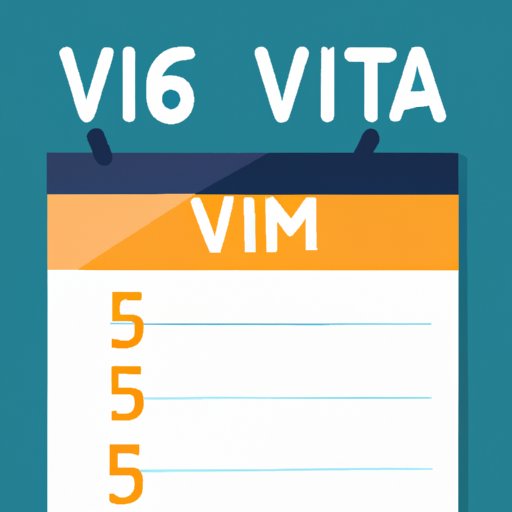
I. Introduction
Physical wellness is a component of overall wellness that focuses on taking care of our bodies through healthy lifestyle choices. This can include exercise, nutrition, and other self-care habits. In this article, we will explore the importance of physical wellness, the benefits of physical activity, tips for incorporating exercise into daily routines, the various types of physical activity, common misconceptions about exercise, establishing fitness goals and tracking progress, and tips for staying motivated and overcoming obstacles to physical activity.
II. The Importance of Physical Activity
Regular physical activity has numerous benefits for our bodies and minds. Some of the important benefits include:
A. Benefits of regular physical activity
Physical activity can help to reduce the risk of chronic diseases such as heart disease, stroke, cancer, and diabetes. It can also help to lower blood pressure and cholesterol levels, improve immune system function, and aid in weight management. In addition, regular exercise can improve joint flexibility and mobility, as well as reduce the risk of falls and other injuries.
B. Improved cognitive function and mental health
Physical activity can also benefit our mental health. It has been shown to improve mood, reduce stress and anxiety, and even improve cognitive function and memory. Exercise also releases endorphins, which can help to boost our mood and sense of well-being.
C. Connection between physical activity and chronic diseases
The connection between physical activity and chronic diseases is well-established. Studies have shown that regular exercise can help to prevent or manage a number of chronic conditions, such as type 2 diabetes, heart disease, and some forms of cancer. Even moderate levels of activity can have significant health benefits, and the more active we are, the greater the benefits.
III. Tips for Incorporating Physical Activity into Daily Routines
Incorporating physical activity into our daily routines can seem daunting, but it doesn’t have to be. By following some simple tips, you can make exercise a regular part of your life:
A. Importance of setting realistic goals
When starting an exercise program, it’s important to set realistic goals that are achievable. This will help you to stay motivated and avoid getting discouraged. Start small and build up gradually, and be sure to celebrate your progress along the way.
B. Finding an activity that you enjoy
Exercise doesn’t have to be a chore. Find an activity that you enjoy – whether it’s hiking, swimming, dancing, or playing a sport – and you’ll be more likely to stick with it. Experiment until you find something that you look forward to doing.
C. Pacing yourself and gradually building up your endurance
It’s important to pace yourself when starting an exercise program. Gradually build up your endurance and don’t push yourself too hard too soon. Listen to your body and take rest days as needed.
D. Integrating physical activity into daily routine
Look for opportunities to incorporate physical activity into your daily routine. This can include walking or biking to work, taking the stairs instead of the elevator, or doing simple exercises during commercial breaks while watching TV.
IV. The Benefits of Different Types of Physical Activity
There are many different types of physical activity, each with its own unique benefits:
A. Cardiovascular exercise
Cardiovascular exercise, such as running, biking, or swimming, can help to improve endurance and boost heart health. It can also help to burn calories and aid in weight loss.
B. Resistance training
Resistance training, such as weight lifting or bodyweight exercises, can help to build strength and increase muscle mass. It can also help to improve bone density and reduce the risk of osteoporosis.
C. Sports and recreational activities
Playing sports or engaging in recreational activities can be a fun way to stay active. These types of activities can improve coordination and agility, as well as provide social interaction and a sense of teamwork.
D. Yoga and other mind-body activities
Yoga and other mind-body activities, such as tai chi, can help to improve flexibility, balance, and overall well-being. They can also help to reduce stress and promote relaxation.
V. Addressing Common Misconceptions about Physical Exercise
There are many myths about physical exercise that can be discouraging for those who are just starting out. However, many of these myths are simply not true:
A. Myth: No pain, no gain
Contrary to popular belief, exercise does not have to be painful to be effective. Starting slowly and gradually building up intensity is a more sustainable approach to exercise than pushing yourself to the limit every time.
B. Myth: Exercise requires a lot of time and effort
Exercise doesn’t have to be a time-consuming or complicated process. Even short bouts of exercise throughout the day can have significant health benefits. And finding an activity that you enjoy can make exercise feel more like play than work.
C. Myth: The only way to get fit is by lifting weights
While resistance training can be a valuable part of an exercise program, it’s not the only way to get fit. Activities such as cardiovascular exercise, yoga, and sports can also be effective ways to improve overall fitness.
D. Evidence-based information to counter these myths
Research has shown that small amounts of exercise can have significant health benefits. And there are many different types of exercise that can be effective for improving fitness and overall health.

VI. Establishing Personal Fitness Goals and Tracking Progress
Setting realistic fitness goals can help you to stay motivated and track your progress. Here are some tips for setting and achieving fitness goals:
A. How to set realistic goals
Set specific, measurable goals, such as running a certain distance or lifting a certain weight. Make sure your goals are achievable and relevant to your overall fitness goals, and start small.
B. Tracking progress towards fitness goals
Keep track of your progress towards your fitness goals, whether it’s through a fitness app or a simple journal. Regularly checking in on your progress can help you to stay motivated and make adjustments to your exercise program as needed.
C. Celebrating progress and avoiding self-criticism
Be sure to celebrate your progress towards your fitness goals, no matter how small. And don’t be too hard on yourself if you experience setbacks or plateaus. Remember that progress towards fitness goals takes time and patience.
VII. Staying Motivated and Overcoming Obstacles to Physical Activity
Staying motivated to exercise can be a challenge, especially when facing obstacles such as injury or a busy schedule. Here are some tips for staying motivated and overcoming obstacles:
A. Finding a buddy or social support
Finding a workout buddy or joining a fitness class can be a great way to stay motivated. Social support can be a powerful motivator for exercise and can provide accountability and encouragement.
B. Reducing barriers to physical activity
Sometimes, barriers to physical activity such as time or lack of equipment can make exercise seem impossible. Look for creative solutions, such as short workouts or bodyweight exercises that require no equipment.
C. Creating a personal accountability system
Creating a system of accountability, such as tracking your workouts or joining an online fitness community, can help you stay on track with your exercise goals.
D. Celebrating small achievements
Don’t forget to celebrate small achievements along the way, such as completing a new exercise or hitting a new personal best. These small wins can help to keep you motivated and on track.
VIII. Conclusion
Exercise and physical wellness are an important part of overall health. By incorporating physical activity into our daily routines, finding activities that we enjoy, and staying motivated and supported, we can create a healthy and sustainable lifestyle that supports our physical and mental well-being.
A. Recap of important points
Regular physical activity has numerous benefits for our bodies and minds, including reducing the risk of chronic diseases and improving mental health. By setting realistic goals, finding enjoyable activities, pacing ourselves, and integrating physical activity into our daily routines, we can make exercise a regular part of our lives. There are many different types of physical activity, and it’s important to find the ones that work best for us. And by addressing common misconceptions about exercise, establishing personal fitness goals and tracking progress, and staying motivated and supported, we can create a healthy and sustainable lifestyle.
B. Encouragement to prioritize physical wellness
With so many benefits to physical activity, it’s important to prioritize our physical wellness. By taking care of our bodies through healthy lifestyle choices, we can improve our overall health and well-being.
C. Resources for further support
For further support in creating a healthy exercise routine, consider talking to a fitness professional or joining a community fitness class. There are also many online resources, such as fitness apps and online forums, that can provide motivation and support.




